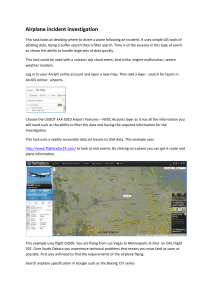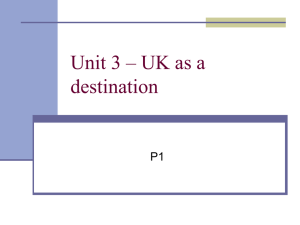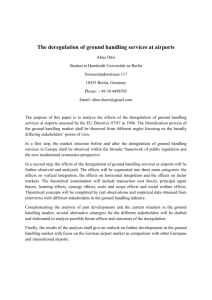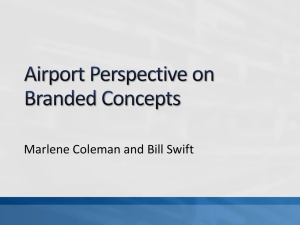Development Challenges of Secondary and Small Airports in
advertisement
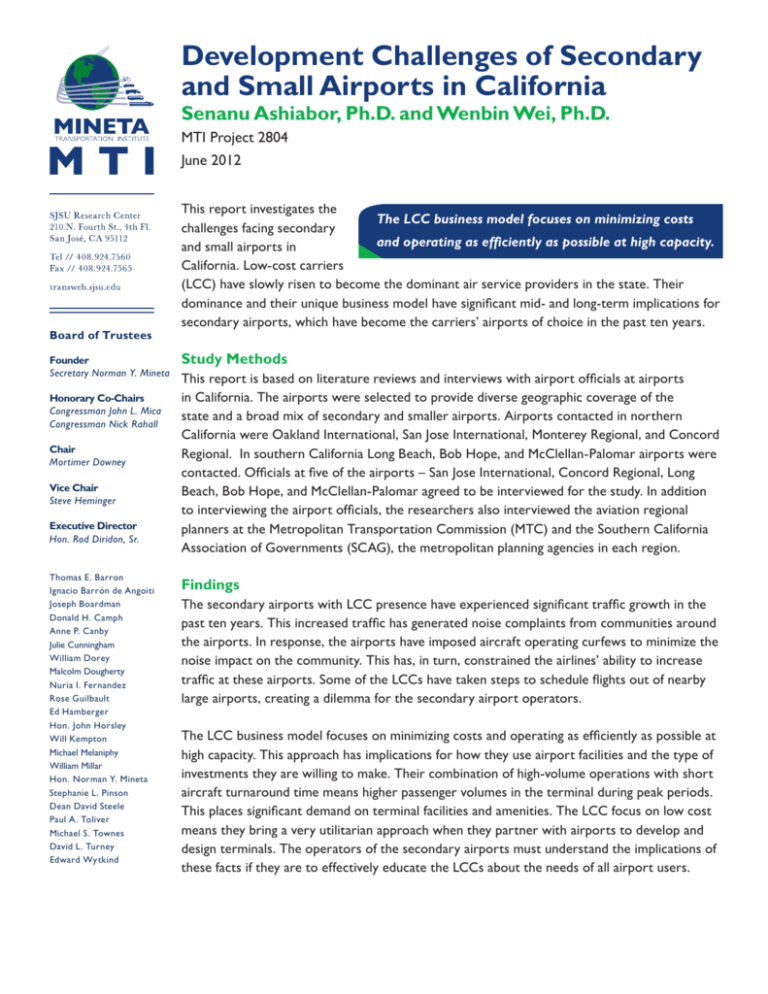
Development Challenges of Secondary and Small Airports in California Senanu Ashiabor, Ph.D. and Wenbin Wei, Ph.D. MTI Project 2804 June 2012 Board of Trustees Founder Secretary Norman Y. Mineta Honorary Co-Chairs Congressman John L. Mica Congressman Nick Rahall Chair Mortimer Downey Vice Chair Steve Heminger Executive Director Hon. Rod Diridon, Sr. Thomas E. Barron Ignacio Barrón de Angoiti Joseph Boardman Donald H. Camph Anne P. Canby Julie Cunningham William Dorey Malcolm Dougherty Nuria I. Fernandez Rose Guilbault Ed Hamberger Hon. John Horsley Will Kempton Michael Melaniphy William Millar Hon. Norman Y. Mineta Stephanie L. Pinson Dean David Steele Paul A. Toliver Michael S. Townes David L. Turney Edward Wytkind This report investigates the The LCC business model focuses on minimizing costs challenges facing secondary and operating as efficiently as possible at high capacity. and small airports in California. Low-cost carriers (LCC) have slowly risen to become the dominant air service providers in the state. Their dominance and their unique business model have significant mid- and long-term implications for secondary airports, which have become the carriers’ airports of choice in the past ten years. Study Methods This report is based on literature reviews and interviews with airport officials at airports in California. The airports were selected to provide diverse geographic coverage of the state and a broad mix of secondary and smaller airports. Airports contacted in northern California were Oakland International, San Jose International, Monterey Regional, and Concord Regional. In southern California Long Beach, Bob Hope, and McClellan-Palomar airports were contacted. Officials at five of the airports – San Jose International, Concord Regional, Long Beach, Bob Hope, and McClellan-Palomar agreed to be interviewed for the study. In addition to interviewing the airport officials, the researchers also interviewed the aviation regional planners at the Metropolitan Transportation Commission (MTC) and the Southern California Association of Governments (SCAG), the metropolitan planning agencies in each region. Findings The secondary airports with LCC presence have experienced significant traffic growth in the past ten years. This increased traffic has generated noise complaints from communities around the airports. In response, the airports have imposed aircraft operating curfews to minimize the noise impact on the community. This has, in turn, constrained the airlines’ ability to increase traffic at these airports. Some of the LCCs have taken steps to schedule flights out of nearby large airports, creating a dilemma for the secondary airport operators. The LCC business model focuses on minimizing costs and operating as efficiently as possible at high capacity. This approach has implications for how they use airport facilities and the type of investments they are willing to make. Their combination of high-volume operations with short aircraft turnaround time means higher passenger volumes in the terminal during peak periods. This places significant demand on terminal facilities and amenities. The LCC focus on low cost means they bring a very utilitarian approach when they partner with airports to develop and design terminals. The operators of the secondary airports must understand the implications of these facts if they are to effectively educate the LCCs about the needs of all airport users. Policy Recommendations Some key recommendations for secondary airports include: • Strive to quickly understand the needs and behaviors of LCCs, which are the airports’ core clients and the dominant air service provider in the state. • Work hard to retain the LCCs, given recent moves by JetBlue to increase flights at Los Angeles International and by Southwest shifting flights from Oakland to San Francisco. • Understand the utilitarian approach LCCs bring to airport development, and educate them to take a broader perspective in considering all terminal users. • Adopt a staged and strategic infrastructure development approach to minimize long-term underuse of facilities. The smaller airports in California are challenged primarily with attracting passengers and generating revenue to sustain their operations. To do so, they must: • Proactively create air service development plans, especially before investing in terminal upgrades to attract traffic. • Size airport development to realistic passenger demand levels. • Consider innovative approaches to providing service to their communities. Finally, California should consider changing the current legislative framework, which limits its ability to help manage the state’s airport systems. About the Authors Dr. Ashiabor is a senior transportation researcher at Kittelson & Associates, Inc. (formerly Dowling Associates Inc.). He specializes in airport systems planning, travel demand forecasting and traffic operations research. Dr. Wenbin Wei is a professor in the Department of Aviation and Technology at the San Jose State University College of Engineering. He teaches various aviation and operations research classes and conducts research for leading institutions, including the National Aeronautics and Space Administration (NASA). Mineta San Jose International Airport To Learn More For more details about the study, download the full report at transweb.sjsu.edu/project/2804.html MTI is a University Transportation Center sponsored by the U.S. Department of Transportation’s Research and Innovative Technology Administration and by Caltrans. The Institute is located within San José State University’s Lucas Graduate School of Business. WEBSITE transweb.sjsu.edu
